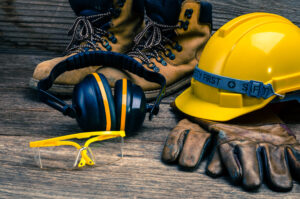A safe workspace is one of the features most workers look for. Workplaces that have standardized safety measures are less likely to have accidents, earning the company a good reputation.
In industries where injuries are prone to happen, business owners do their best to develop a safety culture.
If you’re into manufacturing or production industries, you may want to know how to promote builders’ safety. For that purpose, here’s an article that could help you gain ideas.
1. Apply For A Builders’ Insurance
A builders’ insurance protects business owners and employees in case untoward incidents happen. Employees could apply for insurance claims with a reliable insurance company if they suffer from work-related accidents or sickness. Some people looking for work consider the type of insurance their potential employers are enrolled in. The better coverage and offer the insurance promises, the better the reception.
If you want to know more about the typical coverage of builders’ insurance claims, here are some of the salient features:
Covers the cost of treatment, depending on the severity of the condition
Includes work-related sickness
Protects employees and workers
Covers legal necessities
2. Implement An Occupational Safety Program
If you’re planning to have an occupational safety program at your work, you may need to conduct pieces of occupational training. Initially, you’d hire or form a safety team to plan for this upskilling. They’ll be responsible for coming up with the idea of training regarding what the occupational safety standards prescribe.
The following elements are some of the crucial features you need to have in your program:
Hazard identification and risk assessment
Safety precautions
Continuous improvement
Compliance with occupational safety standards
Workplace ergonomics
Apart from the elements, you need to implement the pieces of training. You could do it before employees are hired and once a year during their employment. In addition, the safety team and officers need to conduct proper monitoring of the program.
You may need to design a quarterly hazard and risk assessment to optimize the program. The feedbacks and findings resulting from the reviews should be your basis for future changes in the program. You may include them in a safety manual for continuous improvement.
3. Proper Construction And Maintenance Of Scaffolding
Scaffoldings are necessary for the quick and safe completion of work, so these must stand firmly. In connection with this, a staircase—alternating or standard—may be necessary for easy climbing. Moreover, the company should ensure the cleanliness and maintenance of the scaffolding.
4. Mark Accident-Prone Areas With Safety Signs
Generally, worksites have potential dangers anywhere. If there are pieces of machinery, there could be slippery spaces. In some cases, there may be areas with protruded or sharp materials. Other places may also have exposure to radiation or hazardous chemicals. Placing clear and cautionary signs in these spaces reduce the risks, increasing the protection of workers.
5. Provide Safety Gear
Safety gears like personal protective equipment (PPE) reduce exposure to hazards such as chemicals, radiation, or extreme temperatures. Providing employees with safety clothing and materials gives them better protection.
To have the best quality safety gear, you may consider the following features to ensure the qualities of the clothing:
Sizing and proper fit: The gear should fit appropriately to any person, regardless of their height and weight.
CE marking: It should be compliant with industry standards.
Resistance: The gear should resist the various threat levels of radiation, chemicals, and other dangers.
Breathability and comfort: The workers shouldn’t just fit the suit properly but also be comfortable.
6. Regularly Inspect Tools And Equipment
Checking the tools and equipment provides time and space for the removal of faulty tools and equipment. This way, the risks of injury are lessened. As part of the inspection, workers could also run maintenance check-ups such as lubrication to ensure functionality.
7. Set Rally Points
Setting up rally points is helpful so that workers know what to do if an accident occurs. In addition, this allows the identification of spaces that should be free from obstacles, making them accessible at all times. Furthermore, it’d contribute to the safety training program in your business as you can incorporate it in training.
Final Thoughts
Promoting builders’ safety isn’t just for the sake of the workers but for the entire company. If you’re running a business with many hazards, you may consider what you’ve got from this article. They could be helpful when you recruit new workers or when you try to promote your business. Above all, they’re essential because they keep builders safe and protected.
Read more:
7 Ways To Promote Builders Safety At Work















